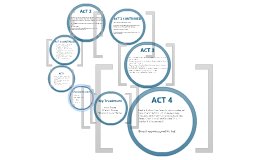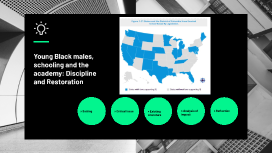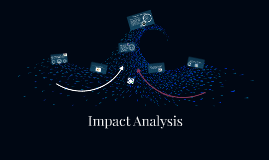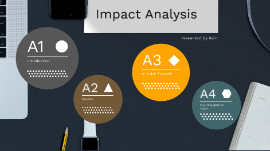Impact Analysis
Transcript: The challenge of Impact Anaysis Impact Analysis Now, for each of the major areas identified, brainstorm all of the different elements that could be affected. For example, if you're looking at departments, list all of the departments in your organization. If you're looking at processes, map out the business processes you operate, starting with the process the customer experiences, then moving on to the business processes that support this. A. Organizational Approach: 4. Evaluate Impacts For smaller decisions, it can be conducted as a desk exercise. For larger or more risky decisions, it is best conducted with an experienced team, ideally with people from different functional backgrounds within the organization: With a team like this, you're much more likely to spot all of the consequences of a decision than if you conduct the analysis on your own. B. McKinsey 7Ss Approach: There's a lot of overlap here between Impact Analysis and some of the other tools we explain on Mind Tools, particularly Risk Analysis , Risk/Impact Probability Charts and Stakeholder Analysis . 2. Brainstorm Major Areas Affected Having listed all of the groups of people and everything that will be affected in an appropriate level of detail, the next step is to work through these lists identifying and listing the possible negative and positive impacts of the decision, and making an estimate of the size of the impact and the consequences of the decision. Now's the time to turn this information into action. If you're using Impact Analysis as part of the decision making process, you need to weigh whether you want to go ahead with the project or decision proposed. You'll need to ask yourself whether it's worth going ahead with the project given the negative consequences it will cause and given the cost of managing those negative consequences. 5. Manage the Consequences How to use Impact Analysis Work by : Amarilda Luzi Merli Hafizi Accept : Prf. Ufuk Durna 3. Identify All Areas Impact Analysis is a technique designed to unearth the "unexpected" negative effects of a change on an organization. What is impact analysis ? If you're managing a project which has already been given the go-ahead, you'll need to think about things like: • The actions you'll need to take to manage or mitigate these consequences. • How you'll prepare the people affected so that they'll understand and (ideally) support change rather than fighting against it. • The contingency strategy needed to manage the situation should the negative consequences arise. C. Tools-Based Approach: • Impacts on different departments. • Impacts on different business processes. • Impacts on different customer groups. • Impacts on different groups of people. .Now brainstorm the major areas affected by the decision or project, and think about whom or what it might affect. Different organizations will have different areas – this is why it's worth spending a little time getting this top level brainstorming correct. The first step is to gather a good team, with access to the right information sources. Make sure that the project or solution proposed is clearly defined, and that everyone involved in the assessment is clearly briefed as to what is proposed and the problems that it is intended to address. Using the popular McKinsey 7Ss approach to thinking about the things that are important to an organization: The challenge in conducting an Impact Analysis is firstly to capture and structure all the likely consequences of a decision; and then, importantly, to ensure that these are managed appropriately.

















